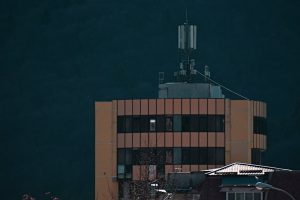Fiber vs. Satellite: The Battle for Internet Dominance in Africa

Fiber vs. Satellite: The Battle for Internet Dominance in Africa
Introduction to Fiber and Satellite Internet
Fiber vs. Satellite: The Battle for Internet Dominance in Africa. The African continent has experienced rapid growth in internet penetration over the past decade, with the number of internet users increasing from 10 million in 2000 to over 500 million in 2020. This growth has been driven by the increasing availability of mobile broadband networks, as well as the expansion of fiber-optic cables and satellite internet services. However, despite this growth, many parts of Africa still lack reliable and affordable internet connectivity, and the battle for internet dominance is far from over.
In this article, we will explore the pros and cons of fiber and satellite internet technologies, and examine the current state of internet connectivity in Africa. We will also look at the key players in the African internet market, and discuss the challenges and opportunities facing the industry.
The Pros and Cons of Fiber Internet
Fiber internet is a technology that uses fiber-optic cables to transmit data as light signals. It is known for its high speeds, reliability, and low latency, making it an attractive option for businesses and individuals who require high-speed internet connectivity. Fiber internet is also less prone to interference and outages, and can support a large number of users without a significant decrease in speed.
However, the deployment of fiber internet infrastructure can be expensive and time-consuming, particularly in rural areas where the population density is low. Additionally, fiber internet requires a physical connection to a fiber-optic cable, which can be a challenge in areas where the infrastructure is not well developed.
The Pros and Cons of Satellite Internet
Satellite internet is a technology that uses satellites in orbit around the Earth to transmit data. It is a good option for areas where fiber internet is not available, as it can provide coverage to remote and rural areas. Satellite internet is also relatively easy to deploy, as it does not require a physical connection to a fiber-optic cable.
However, satellite internet is often more expensive than fiber internet, and can be affected by weather conditions and signal interference. It also tends to have higher latency than fiber internet, which can make it less suitable for applications that require real-time communication, such as video conferencing and online gaming.
The Current State of Internet Connectivity in Africa
Despite the growth in internet penetration, many parts of Africa still lack reliable and affordable internet connectivity. According to a report by the International Telecommunication Union (ITU), in 2020, only 22% of the African population had access to the internet, compared to 47% in Europe and 43% in the Americas.
The lack of internet connectivity in Africa is due to a number of factors, including the high cost of internet services, the lack of infrastructure, and the limited availability of digital skills. However, there are also many initiatives underway to improve internet connectivity in Africa, including the deployment of fiber-optic cables and satellite internet services, as well as the development of digital skills and online content.
Conclusion
In conclusion, the battle for internet dominance in Africa is far from over. While fiber internet is known for its high speeds and reliability, satellite internet is a good option for areas where fiber internet is not available. The current state of internet connectivity in Africa is characterized by a lack of reliable and affordable internet connectivity, but there are many initiatives underway to improve the situation.
As the African internet market continues to grow and evolve, it is likely that we will see a combination of fiber and satellite internet technologies being used to provide internet connectivity to the continent. The key players in the African internet market will need to be innovative and flexible in order to meet the changing needs of the market, and to provide reliable and affordable internet connectivity to the millions of Africans who are still without it.





